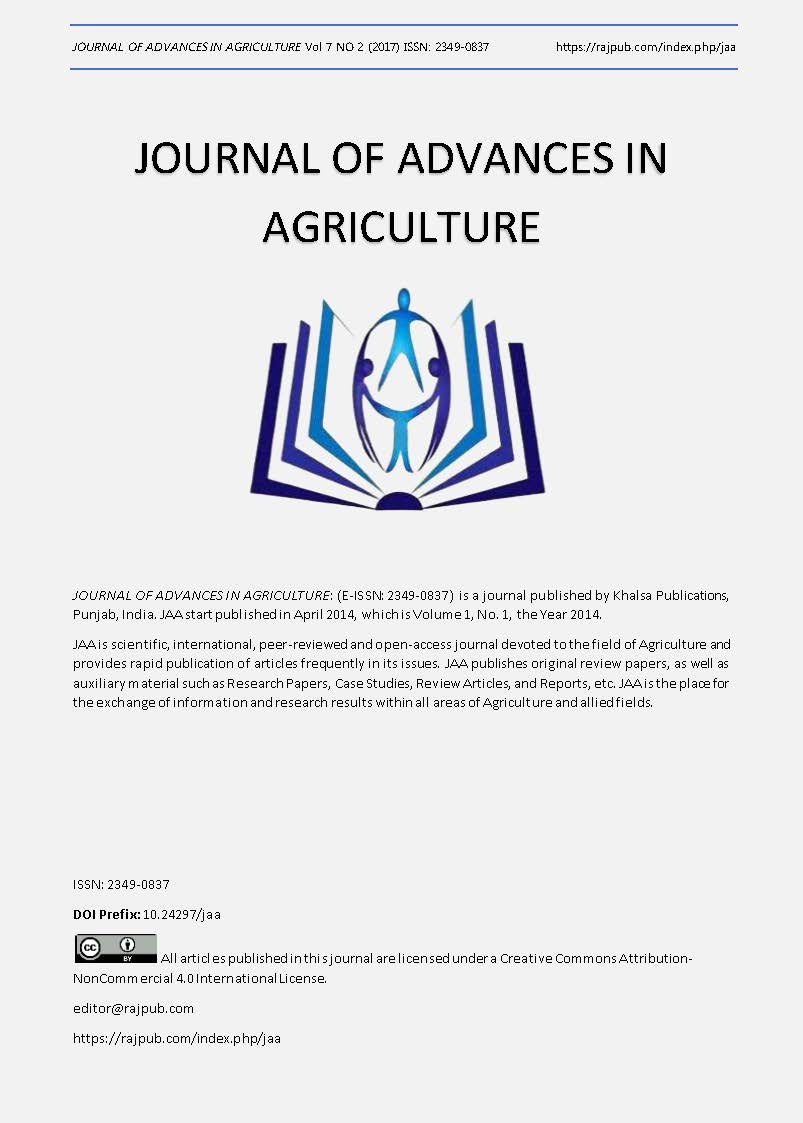EVOLUTIONARY DYNAMICS OF BEE COLONY COLLAPSE DISORDER: FIRST STEPS TOWARD A MATHEMATICAL MODEL OF THE CONTAGION HYPOTHESIS
DOI:
https://doi.org/10.24297/jaa.v7i2.6080Keywords:
Honey bee, logistic curve, mathematical epidemiology, commercial pollination.Abstract
The disappearance of honey bees from many managed colonies in the United States and Europe in 2006 and 2007 is modeled under the assumption that the cause is some contagion. Based on the limited data available, we use a simple model to suggest that colony collapse disorder will not destroy all colonies in the United States. To predict the evolution of future outbreaks, however, and perhaps trace their origins, it is recommended that graph-theoretic data be collected, and that census data be collected on a more frequent basis, concerning bee populations.
Downloads
References
[2] Robyn M. Underwood and Dennis vanEngelsdorp, “Colony Collapse Disorder: Have We Seen This Before?†Bee Culture (2007).
[3] Dennis vanEngelsdorp, Robyn Underwood, Dewey Caron, and Jerry Hayes, Jr., “An Estimate of Managed Colony Losses in the Winter of 2006-2007: A Report Commissioned by the Apiary Inspectors of America,†American Bee Journal (July 2007).
[4] Roger A. Morse and Nicholas W. Calderone, “The Value of Honey Bees As Pollinators of U.S. Crops in 2000,†Bee Culture 128 (2000).
[5] Renée Johnson, “Recent Honey Bee Colony Declines,†Congressional Research Service Report for Congress (March 31, 2007).
[6] Marc Lipsitch et al., “Transmission Dynamics and Control of Severe Acute Respiratory Syndrome,†Science 300 (2003), 1966-1970.
[7] Norman T. J. Bailey, The Mathematical Theory of Epidemics (Charles Griffin and Company Limited, London, 1957).
[8] Rick Wills, “Apple Growers in Pa. Enter Crucial Pollination Period,†Pittsburgh Tribune-Review, May 4, 2007.
[9] E. Lieberman, C. Hauert, and M. Nowak, “Evolutionary Dynamics on Graphs,†Nature 433 (2005), 312-316.
[10] National Agricultural Statistics Service, “Honey†(February 28, 2007, February 28, 2006, February 28, 2005, February 27, 2004).
[11] Dennis vanEngelsdorp, personal communication (2007).
[12] Roy M. Anderson and Robert M. May, Infectious Diseases of Humans: Dynamics and Control (Oxford University Press, Oxford, 1991).
[13] Lord Robert May, personal communication (2007).
[14] Carlos Castillo-Chavez, Carlos W. Castillo-Garsow, and Abdul-Aziz Yakubu, “Mathematical Models of Isolation and Quarantine,†Journal of the American Medical Association 290 (2003), 2876-2877.
[15] M. J. Keeling, M. E. J. Woolhouse, R. M. May, G. Davies, and B. T. Grenfell, “Modelling Vaccination Strategies against Foot-and-Mouth Disease,†Nature 421 (2003), 136-142.
[16] Glenn Webb, personal communication (2007).
Downloads
Published
How to Cite
Issue
Section
License
 All articles published in Journal of Advances in Linguistics are licensed under a Creative Commons Attribution 4.0 International License.
All articles published in Journal of Advances in Linguistics are licensed under a Creative Commons Attribution 4.0 International License.




